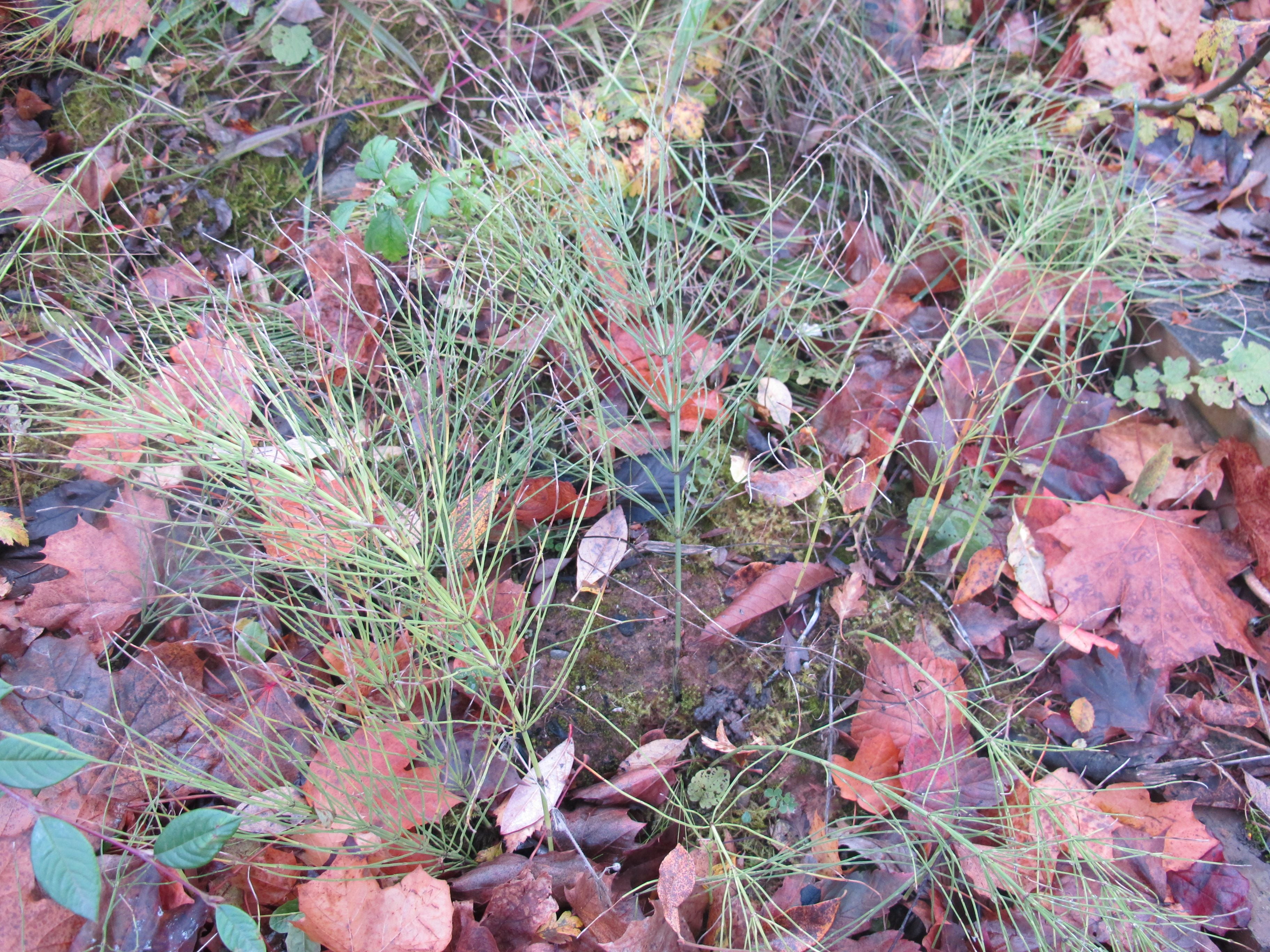Common Horsetail
Introduction
Equisetum arvense, L.
Horsetail is also commonly mistakenly referred to as Mare's-tail, Hippuris vulgaris, which is actually a completely different plant although it looks similar. This may be because being more closely related to ferns it does not appear in the majority of wildflower guides though Mare's-tail does.
Horsetail refers to the genus Equisetum which, in the UK, is composed of 9 species and 7 hybrids although only one species tends to create problems for landowners, Common Horsetail, Equisetum arvense. Equisetum is the last surviving genus in the Equisetaceae family which was extensive in prehistoric times. Horsetails are the relicts of an ancient family known through fossils in the Upper Carboniferous from as early as 325 million years ago, the geological period when the remains of plants became the vast coal deposits that we use today. Although contemporary Equisetum species are herbaceous, fossil relatives (genus Calamites) were medium size trees up to 20 metres (65 feet) high.
Common Horsetail is distributed extensively throughout the Northern Hemisphere and is only absent in Australasia and the Antarctic. Common Horsetail is in a family which reproduces using spores rather than seeds. It can also reproduce vegetatively though an extensive system of rhizomes. The leaves of horsetails grow in whorls fused into nodal sheaths. The stems are green and photosynthetic, and distinctive in being hollow, jointed and ridged (with sometimes 3 but usually 6-40 ridges).
The stems and leaves are barely differentiated which makes this a difficult plant to control as most herbicides are formulated to be absorbed through the leaves. Another aspect that makes control difficult is that it has separate non-photosynthetic spore-bearing stems that are produced in early spring enabling it to reproduce before management programmes commence. The habit of its growth also makes it physically difficult to control as the segments pull apart readily leaving the root in the soil which can be found at up to depths of 2 metres. It can spread from surrounding areas and is difficult to control once it is established.
Identification
The sterile stems that are seen through the growing season are what are readily recognised as Common Horsetail. These are variable in habit though mainly between 10–50 cm tall with jointed segments around 2–5 cm long with whorls of side shoots at the segment joints; the main shoot is between 3-5 mm wide and the side shoots have a diameter of about 1 mm. Some stems can have as many as 20 segments. The fertile stems look quite distinct, off-white, 10–25 cm tall and 3–5 mm diameter, with 4–8 whorls of brown scale leaves, and an apical brown spore cone 10–40 mm long and 4–9 mm broad.
Cultural Methods Of Control
Common Horsetail occupies areas where little competition exists and can thrive on relatively low nutrients because of its extensive root system. Applying mulch can often reduce the population. Constantly tilling the soil will reduce the vigour of an infestation and over time can eradicate it. However, unless this process can be done repeatedly and for a considerable period of time cultivation may lead to the plant spreading vegetatively and increase the problem.
Chemical Methods Of Control
Professional Pesticides
Historically the most effective chemical treatment of Common Horsetail was to bruise the leaf by rolling it and then apply glyphosate, the active ingredient in Roundup ProVantage the small surface area of the stem combined with its waxy cuticle makes it difficult to permeate the plant and obtain effective control.
Domestic Weed Killer
The most effective chemical treatment of Common Horsetail for domestic users is to bruise the leaf by rolling it or tamping on it and then applying glyphosate, the active ingredient in Barclay Gallup the small surface area of the stem combined with its waxy cuticle makes it difficult to permeate the plant and obtain effective control. Barclay Gallup is a very effective herbicide that starts to degrade almost as soon as it is applied however it is not selective and will kill any plant it comes into contact with.

